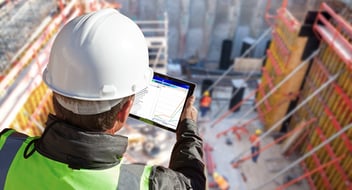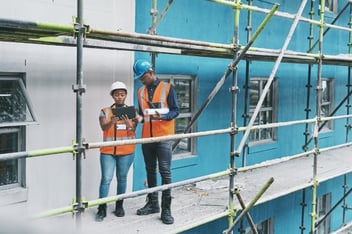
This blog was published in conjunction with RICS World Built Environment Forum.
Without data standards, the smart city will remain an attractive but elusive idea.
The digital transformation of construction practices has been a hot topic of industry conversation for years. But what digitalization actually means can vary according to whereabouts on the supply chain your organization sits.
Nonetheless, certain trends are evident. Many firms, from the large contractors right through to SMEs, are trying to leverage the benefits of automation to cut costs, waste, and human error. This frees up staff to do more in the way of “meaningful” work; we have, in previous columns, covered the ways in which AI is reshaping job profiles.

But AI offers a bigger promise: beyond reprofiling jobs, it can reprofile entire cities. How? By connecting the data that is generated in the design, construction, operation, and decommissioning of real estate assets. We know that masses of data accumulate at each stage of a building’s lifecycle. We also know that much of that valuable data falls between the cracks as project custodianship shifts from architect to builder, to owner, to occupier, to facilities manager. When we scale this phenomenon up from the level of individual buildings to the entire cityscape, we can see the true magnitude of the opportunity that is being missed. This is one of the reasons why truly smart cities are vanishingly rare—if, indeed, they exist at all, outside of the imaginations of a select few ambitious urbanists. Two things absolutely need to happen in the industry if we are to change this.

Firstly, we must make substantive progress towards a globally accepted and widely adopted data standard. This would not only allow for the seamless transfer of data between project teams at different points of the asset lifecycle. It would also allow for the open sharing of data between assets, meaning that building performances can be optimized for cost and sustainability. We need international bodies such as RICS to continue the work they are doing—impartial voices will be vital to driving confidence in any data standard. Too often, the default position in our industry is that, by sharing data with peers, we sacrifice our commercial advantage. With a data standard supported by a global coalition of institutions—specifically, organizations without “a horse in the race”—we can change that mindset.
"Too often the relationship between project partners is transactional, rather than collegial. Connected data is great, but if we don’t better connect the people who bring the building to life, we will continue to encounter the same old obstructions."
And that flows nicely into the second requirement: we must push back against old-fashioned and “legacy” attitudes and practices in the industry. Too often the relationship between project partners is transactional, rather than collegial. Connected data is great, but if we don’t better connect the people who bring the building to life, we will continue to encounter the same old obstructions.
Happily, there is much work going on in both of these spaces. The UK has become something of a leader in the field of information management, but across the world, these sorts of conversations are rising up the order of priorities. A globally recognized data standard will allow the industry to speak the same language across the world. It is not lost on the industry what a game-changer this would prove to be.

As regards the question of a necessary cultural shift, there is plenty of software coming online that can usher us in the right direction. Business intelligence (BI) tools are increasingly being used to aggregate data in a shared environment. We are, for instance, seeing many of our clients using electronic forms to capture important data. This could include occupancy levels, employee wellbeing, energy usage, and more.
Previously, such data would have been recorded in a static document (Microsoft Word or similar) making it largely inaccessible and undynamic. Electronic forms, meanwhile, can be updated in real-time, shared as widely as required and, critically, anonymized and added to existing, larger, datasets. This is just one way in which we can begin to connect data that might have otherwise been siloed. To bring us full circle, the importance of having a shared language, or a standardized means of capturing said data, is self-explanatory.
We are talking here about taking a golden thread of data—namely data from the design through to the decommissioning phase of the individual built asset—and using it to weave a golden web. A city full of smart buildings is not a smart city unless those individual assets are networked.
Want to learn more about how standards can improve your projects? Discover more here.
3 minute read
Asite Insights in your inbox.
Sign up for product news and our latest insights published monthly. It's a newsletter so hot, even global warming can't keep up.



